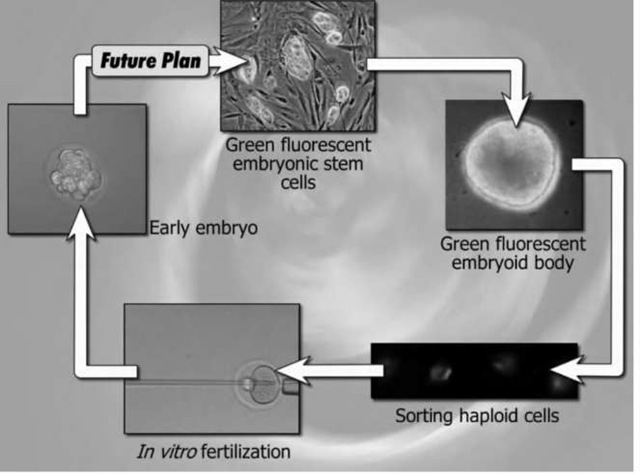Embryonic stem cells were first identified in the 1980s in animal models, and the breakthrough of their successful isolation from human embryonic tissue came after about two decades. They are derived from embryos that are in their initial stages of development. After an ovum is fertilized by a sperm, a zygote is formed, which then transforms into a loose clump of cells, called the morula, around the fourth day of embryonic development.
The morula then forms an inner and an outer cell mass, which transform into embryonic and extra embryonic tissue (necessary for the initial development of the embryo), respectively. The inner cell mass gives rise to three germinal layers—ectoderm, endoderm, and mesoderm—which go on to form different organs and tissues as the embryo matures. Embryonic stem cells are derived from the inner cell mass around day four or day five postfertilization. After isolation, the embryonic stem cells are cultured in the laboratory.
The illustration shows the derivation of embryonic germ cells and male gametes from embryonic stem cells.
Scientists have also isolated cells with the potential of self-replication from the gonadal ridge—a part of the embryo that later produces eggs or sperm. These cells are called germ cells and are usually derived between week five and week nine of development.
Embryonic stem cells possess the property of pluripotency, which means that they can differentiate into all other cell lines except placenta and extra embryonic membranes, which are formed during embryonic development to support the embryo but are not needed after birth. Their growth is either initiated spontaneously or after the provision of appropriate environmental signals; they have been shown to have the highest potential for self-renewal and differentiation when compared with other sources such as germ, umbilical, and adult stem cells.
Because of the moral dilemmas surrounding the method of obtaining human embryonic stem cells, a policy was drafted by the U.S. federal government in August 2001 obstructing scientists from isolating stem cells by the destruction of human embryos.
However, the policy did allow them to continue to work on embryonic stem cell lines that had already been obtained or for which the derivation process had been initiated before the policy’s implementation, resulting in more than 20 well-characterized human embryonic stem cell lines for widespread distribution to scientists for research purposes as of March 2007.
Most of the work using embryonic stem cells has been done on either animal models or during in vitro experiments, in which they have shown promising results for the cure of Parkinson’s disease, myocar-dial infarction, diabetes, and spinal cord injury; however, human trials have not been conducted thus far. Scientists have shown that embryonic stem cells can be successfully made to differentiate and grow into neural, vascular, and other tissues. They are also trying to find acceptable ways of deriving new human embryonic stem cell lines without destroying living embryos. A group of scientists is focusing their efforts on retrieving them from dead embryos, and there is hope that if the tissues from some of these dead embryos can be cultured in the laboratory, they can be ultimately used to cure diseases or form various organs.
Although embryonic stem cell research is still in the budding phase, the results thus far look promising, and scientists are gradually heading toward the stage at which they may be able to use these cells as a treatment modality for many diseases.

